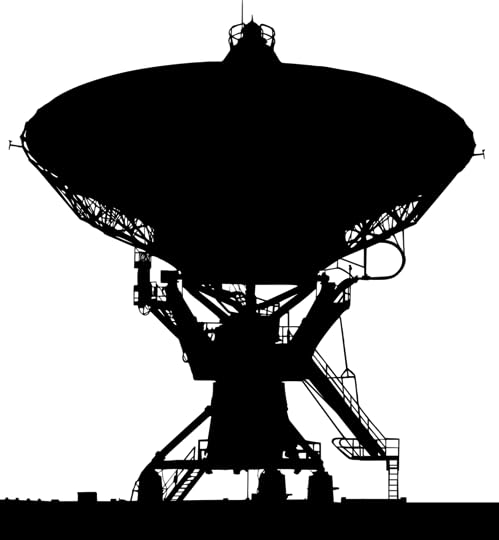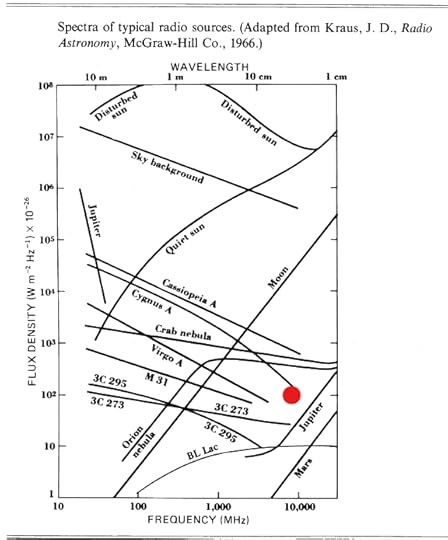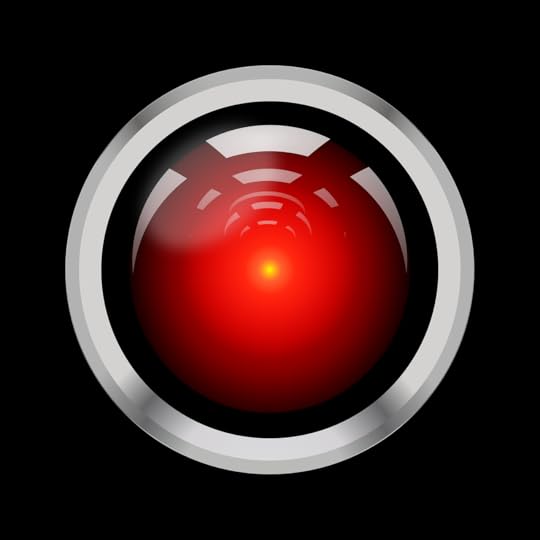Case I of First Contact, an Article by Torn MacAlester
This article is the first follow-on to a series on first contact.
 First Contact: An Article By Torn MacAlesterFirst contact is one of the mainstay themes of science fiction. In fact, it would not surprise me if it was the most common theme in all science fiction. To the scientist in me, I’d like to understand many of the aspects of first contact and figure out what the most likely case of contact would be. Thus, I undertook this analysis to estimate what I might do for my world building for my stories. First off, in science fiction, we have cases where there are both slower than light travel and faster than light (FTL) travel. So, I will […]
First Contact: An Article By Torn MacAlesterFirst contact is one of the mainstay themes of science fiction. In fact, it would not surprise me if it was the most common theme in all science fiction. To the scientist in me, I’d like to understand many of the aspects of first contact and figure out what the most likely case of contact would be. Thus, I undertook this analysis to estimate what I might do for my world building for my stories. First off, in science fiction, we have cases where there are both slower than light travel and faster than light (FTL) travel. So, I will […]
This is part of a series of articles about science fiction world building:
 World Building for Science FictionImage by Snapwire on pexels I wanted to share some insight into the world building process that I am using in my science fiction stories. First off, most would call my science fiction as ‘Hard’ science fiction because of my use of scientific rigor when developing my stories. For myself, it’s part of the reason for storytelling. The situations I like to consider an interesting science or engineering problem as part of my story. As part of that effort, I try to keep the science as correct as possible. The question that every science fiction author faces at some point […]Introduction
World Building for Science FictionImage by Snapwire on pexels I wanted to share some insight into the world building process that I am using in my science fiction stories. First off, most would call my science fiction as ‘Hard’ science fiction because of my use of scientific rigor when developing my stories. For myself, it’s part of the reason for storytelling. The situations I like to consider an interesting science or engineering problem as part of my story. As part of that effort, I try to keep the science as correct as possible. The question that every science fiction author faces at some point […]Introduction From the moment the first experiments with radio began, the possibility of detecting alien transmissions became real. If there was an advanced civilization on Mars, it would be likely that we could detect their transmissions because of its proximity. We can find alien signals with mature radio astronomy. The real possibility of hearing aliens became real. As pointed out before, once a civilization develops radio, it sends out its calling card into the Universe. It is only a matter of time before that signal reaches a distance in which an alien receiver will detect it. The entire SETI program is an effort to detect those signals. As of this writing, apart from some unusual non-repeated and unconfirmed signals detected, SETI has noticed nothing. In fact, SETI has put some serious constraints upon what can exist within our own galaxy.
Scientific EvidenceWe have found no evidence of extremely advanced civilizations, like class II civilizations, having the energy use of an entire star. This does not mean that they do not exist, but it means that they didn’t exist when the light left that distant part of the galaxy. For example, the most distant part of the galaxy is about 70,000 light years away. A class II civilization would have to emerge more recently than 70,000 years ago to prevent us from detecting them. That there is no detection implies that a collapsed ancient alien class II civilization must have fallen over 70,000 years ago.
The lack of detection also indicates that there are not any Earth level technologies within one hundred light years of Earth. If they were there, we would have detected them. With better technology, the lack of detection narrows down the potential alien civilizations. Discovery of ancient alien artifacts is also part of this case. The dating of the artifact provides clues about the alien civilization’s location and status. If they were still active, we could detect their radio signals. The absence of any detection is as significant and fascinating as discovering an alien civilization.
Carl Sagan’s ContactCarl Sagan well described this case in Contact. In the story, the researchers, led by Dr. Ellie Arroway, detect the large unambiguous signal from the star Vega:
Briskly she entered the control area and approached the main console.
“Evening, Willie, Steve. Let’s see the data. Good. Now where did you tuck away the amplitude plot? Good. Do you have the interferometric position? Okay. Now let’s see if there’s any nearby star in that field of view. Oh my, we’re looking at Vega. That’s a pretty near neighbor.”
Her fingers were punching away at a keyboard as she talked.
“Look, it’s only twenty-six light-years away. It’s been observed before, always with negative results. I looked at it myself in my first Arecibo survey. What’s the absolute intensity? Holy smoke. That’s hundreds of janskys. You could practically pick that up on your FM radio.
“Okay. So we have a bogey very near to Vega in the plane of the sky. It’s at a frequency around 9.2 gigahertz, not very monochromatic: The bandwidth is a few hundred hertz. It’s linearly polarized and it’s transmitting a set of moving pulses restricted to two different amplitudes.” ‑Contact, Carl Sagan, Chapter 4.
The brightness is huge. A hundred Jansky’s is bright for an astronomical radio source, though not the brightest. Figure 1 below shows the Contact source on a graph of the spectrum of radio sources. Because of its brightness, only some of the brightest radio objects in the sky are brighter. At the scale of this graph, the bandwidth of a few hundred Hertz is negligible. Natural objects have much larger bandwidths and produce a spectrum of signal across many frequencies.
The content of the message is unambiguous at first. It is the counting of the prime numbers. Since there is no natural phenomenon to generate prime numbers, the signal by definition is from some kind of intelligence.
 Message from Vega
Message from Vega Next, the location of the source is the star Vega. Pointing the radio antennas off axis (away from the signal source) caused the signal to fade; this validated the location. The center strongest point of the signal is the star Vega. The bigger the antenna that is used, makes this a tighter circle of focus (like a zoom for an optical lens). In the story, one character suggests someone faked the signal. This would have been impossible. Satellites do not move like stars. For each observer on the Earth, the place in the sky where the satellite would be located is different for each observer. Geostationary orbit only fixes the position of the satellite as seen from the ground. The satellite would still move across the night sky. Fixing the satellite against the night sky would require considerable distance-nearly the edge of the solar system. And the motion would be contrary to any orbit that gets it out far enough not to be noticed would not move correctly. I’m sure Dr. Sagan was well aware of these facts. I think it was a convenient point to use a literary license for the story.
Up to this point in the novel, this is a Case I first contact. Humanity has detected a transmission from an alien civilization. The discovery of the message’s additional content showed that the aliens were responding to a human message they had received. Consequently, Contact changes to a Case II first contact.
Clarke’s 2001Another Case I first contact is presented in 2001 A Space Odyssey by Arthur Clarke. Here, humanity discovers an alien artifact on the Moon. The artifact’s alien origin is undisputed, and it left an unmistakable non-natural signature, revealing its presence. Although buried, its anomalous magnetic signature, dubbed Tycho Magnetic Anomaly one (TMA‑1), led to its discovery.
Another picture flashed on the screen; it looked like a contour map, though it showed magnetic intensity, not heights above sea level, the lines were roughly parallel and spaced well apart; but in one corner of the map they became suddenly packed together, to form a series of concentric circles-like a drawing of a knothole in a piece of wood.
Even to an untrained eye, it was obvious that something peculiar had happened to the Moon’s magnetic field in that region; and in large letters across the bottom of the map were the words: TYCHO MAGNETIC ANOMALY-ONE (TMA‑1). Arthur C. Clarke 2001: A Space Odyssey chapter 11.
 OpenClipart-Vectors from Pixabay" alt class="so-widget-image">
OpenClipart-Vectors from Pixabay" alt class="so-widget-image"> Digging up the artifact revealed the Monolith which signaled Saturn. (Note the novel is a journey to Saturn instead of a journey to Jupiter. The artifact excavation revealed that the Monolith builders had left behind the monoliths on the Moon and at Saturn for them. Though 2001 stipulates that the aliens had visited humanity in the distant past, there is no sign that the aliens received our radio transmission or found any of our artifacts. Other than the signal to Saturn, the aliens of 2001 had sent no detectable signals.
Upon reaching Saturn, we discover the aliens possess faster than light capabilities. We could classify this as a case III contact. However, the original short story of Clarke’s for which 2001: a Space Odyssey is based,
Now Available Torn MacAlester’s Fabulae Lunae The Lunadyne Incident and Other Stories (buy now)
 Available Now
Available Now Fabulae Lunae 1Thunder Moon Tussle (buy now) [image error] Coming in 2025
Fabulae Lunae 2Mask of the Joyful Moon [image error]
The post Case I of First Contact, an Article by Torn MacAlester appeared first on Torn Macalester.



